NEWS
20 Fitness Goals You Need To Hit To Make The Most Of Life In Retirement
Published
2 months agoon
Retirement is the perfect time to prioritize health and fitness to ensure you enjoy this new chapter to its fullest. Staying active not only improves your physical well-being but also enhances mental health and overall quality of life. Setting achievable fitness goals tailored to your needs helps you remain strong, independent, and energized. Here are 20 essential fitness goals to aim for in retirement to make the most of life.
Walk 10,000 Steps Daily
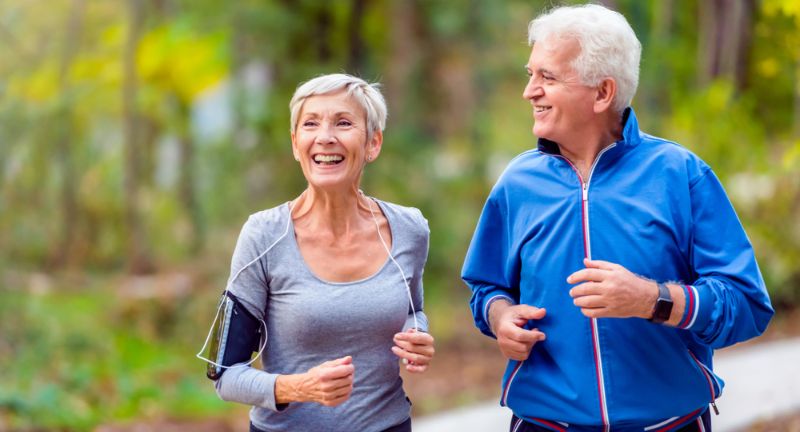
Shutterstock
Walking 10,000 steps a day is an excellent way to maintain cardiovascular health and stay active in retirement. This goal helps improve endurance, reduce the risk of chronic illnesses, and boost your mood. It’s easy to track with a pedometer or fitness app, making it a practical target. Walking regularly also provides opportunities to explore your surroundings and socialize.
Maintain a Healthy Weight
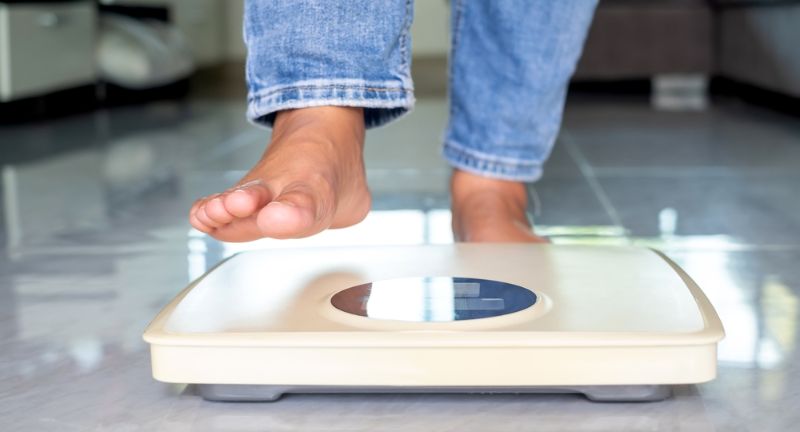
Shutterstock
Achieving and maintaining a healthy weight is crucial for reducing the risk of diabetes, heart disease, and joint problems. Focus on a balanced diet combined with regular exercise to meet this goal. Monitoring your weight regularly helps ensure you stay on track. A healthy weight improves both physical and mental well-being.
Hold a 60-Second Plank
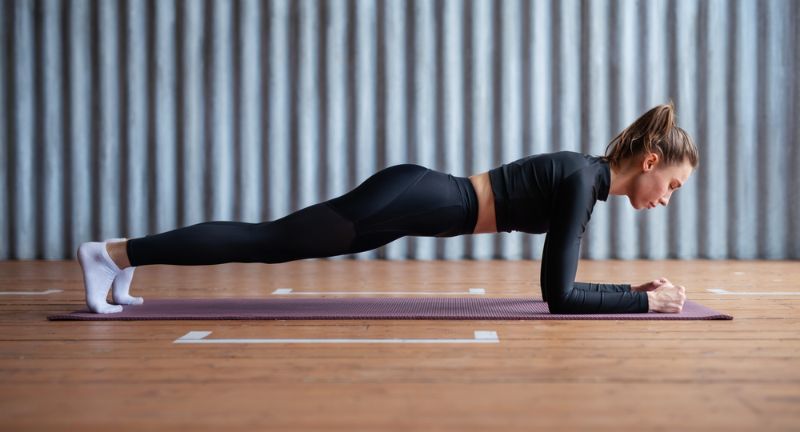
Shutterstock
A one-minute plank is an excellent goal for improving core strength and stability. Core muscles are essential for balance, posture, and preventing back pain. Start with shorter intervals and gradually work up to a full minute. Achieving this goal enhances your ability to perform everyday activities with ease.
Participate in a Fun Fitness Class
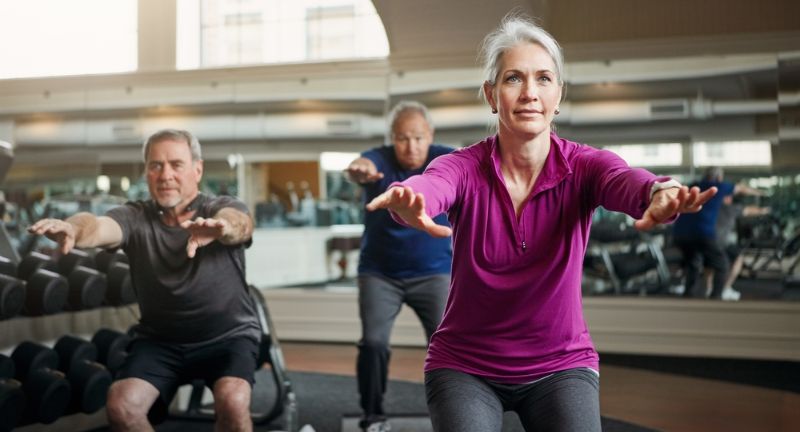
Shutterstock
Joining a group fitness class, such as yoga, Zumba, or water aerobics, keeps you motivated and active. These classes improve strength, flexibility, and cardiovascular health while offering a social component. Choose a class that aligns with your interests and fitness level. Participating regularly helps you stay engaged and excited about exercise.
Complete a 5K Walk or Run
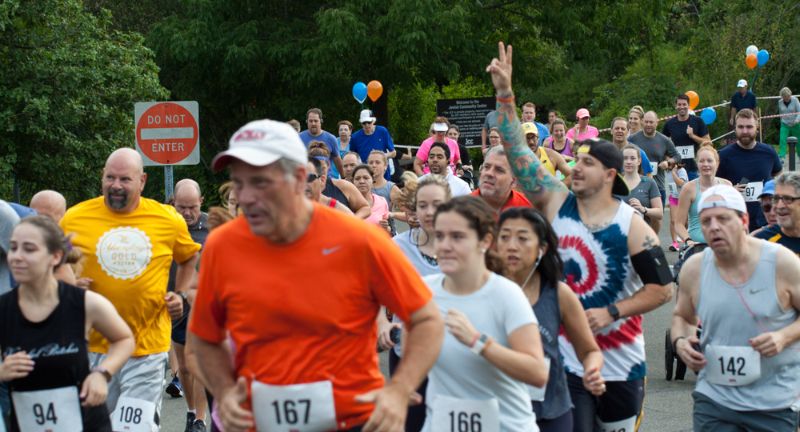
Shutterstock
Training for and completing a 5K event is a rewarding goal that improves endurance and provides a sense of achievement. Whether you walk, jog, or run, participating in a 5K enhances cardiovascular health and builds community connections. Set a training schedule to gradually build your stamina. Celebrating this milestone boosts confidence and motivation.
Climb a Set of Stairs Without Resting

Shutterstock
Climbing stairs is an excellent measure of lower body strength and cardiovascular fitness. Being able to climb a flight of stairs without resting ensures you maintain independence and mobility. Incorporate stair climbing into your routine to build endurance and leg strength. This practical goal prepares you for real-world challenges.
Improve Your Balance
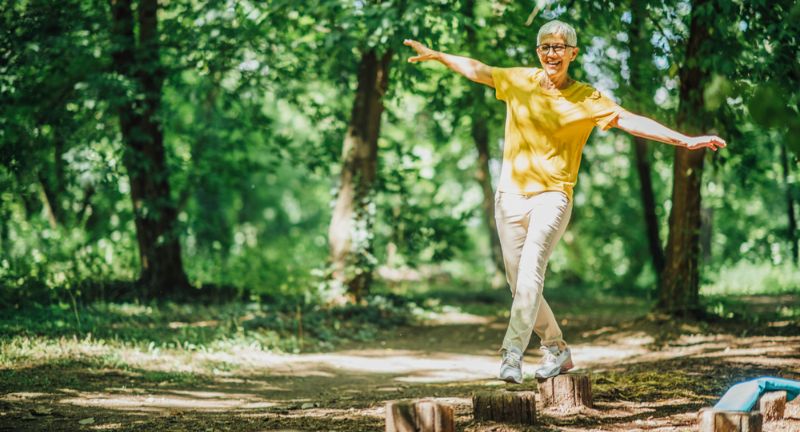
Shutterstock
Good balance reduces the risk of falls and injuries, especially as you age. Practice balance exercises like standing on one leg or tai chi to enhance stability. Setting this goal helps improve confidence in everyday movements. Better balance supports overall mobility and independence in retirement.
Lift Light Weights Twice a Week
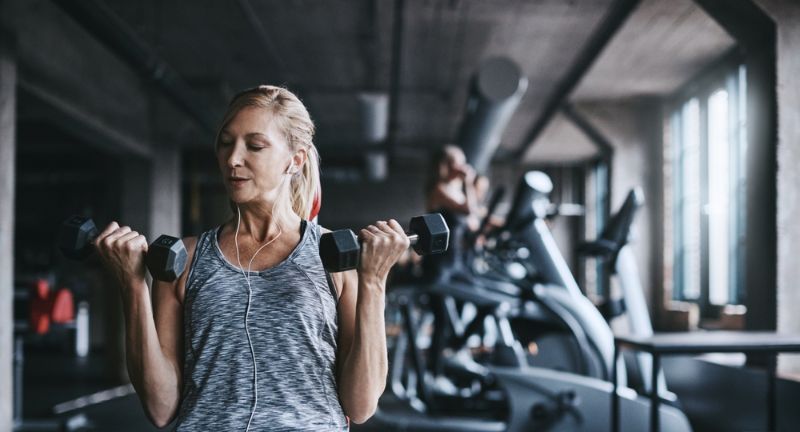
Shutterstock
Incorporating weight training into your routine twice a week helps maintain muscle mass and bone density. Focus on light weights and proper form to avoid injury while building strength. This goal supports daily activities like lifting groceries or gardening. Strength training also boosts metabolism and overall energy levels.
Stretch Every Morning
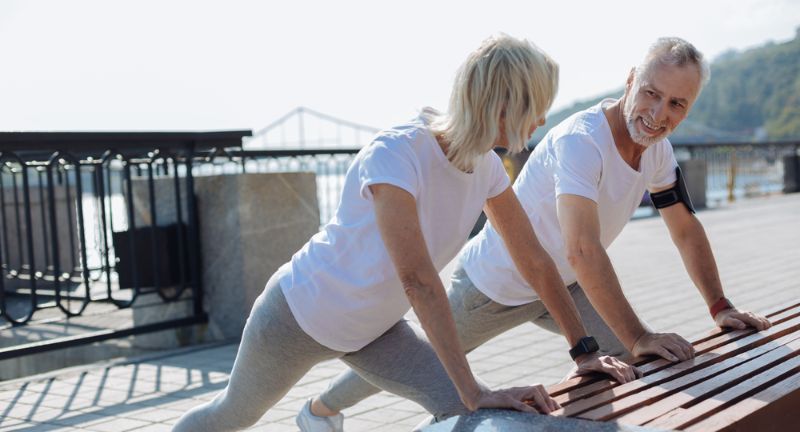
Shutterstock
Starting your day with a stretching routine improves flexibility and reduces stiffness. Regular stretching enhances circulation and prepares your body for the day’s activities. Focus on major muscle groups like your legs, back, and shoulders. This simple habit contributes to better mobility and reduced risk of injury.
Stay Active for 30 Minutes a Day
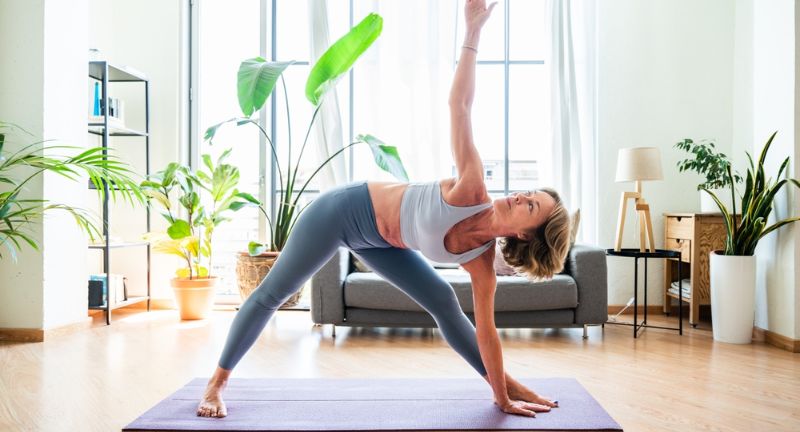
Shutterstock
A daily activity goal of at least 30 minutes helps you maintain a consistent exercise routine. Whether it’s walking, dancing, gardening, or cycling, regular movement improves physical and mental health. Breaking the time into shorter sessions is just as effective. Staying active daily ensures you enjoy a vibrant and fulfilling retirement.
Perform 15 Bodyweight Squats

Shutterstock
Being able to complete 15 bodyweight squats demonstrates strong leg muscles and good overall mobility. Squats mimic everyday movements like sitting and standing, making them highly functional. Practicing squats regularly helps improve lower body strength and balance. This goal ensures you maintain independence for daily activities in retirement.
Increase Your Flexibility
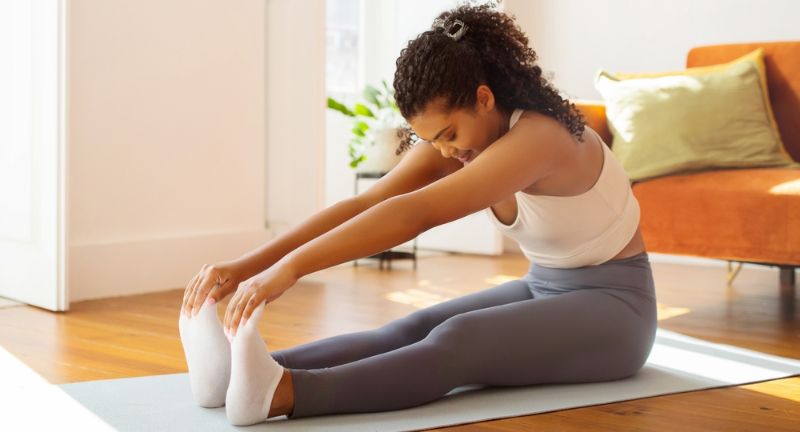
Shutterstock
Improving flexibility through stretching or yoga helps prevent stiffness and enhances your range of motion. Focus on exercises that target tight areas like your hamstrings, hips, and shoulders. Greater flexibility reduces the risk of injuries and makes everyday movements easier. It’s an essential goal for staying active and mobile in retirement.
Swim 10 Laps in a Pool
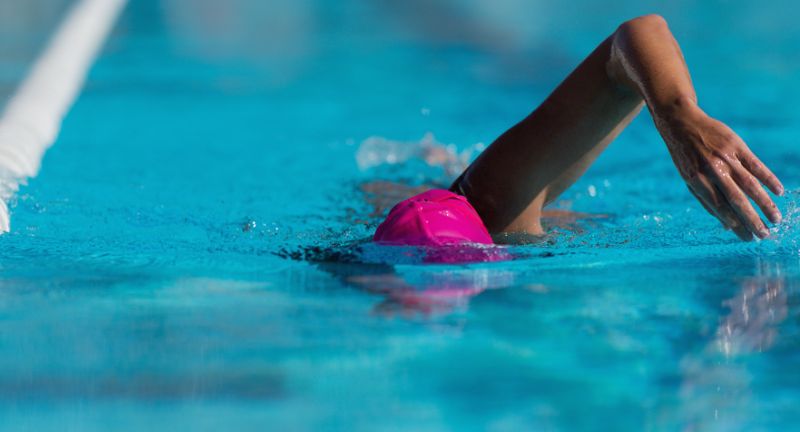
Shutterstock
Swimming is a low-impact exercise that improves cardiovascular health, strength, and endurance. Completing 10 laps in a pool is an excellent goal for retirees, offering a full-body workout without putting stress on joints. Swimming also enhances lung capacity and boosts mental well-being. It’s a fun and effective way to stay fit.
Bike for 5 Miles
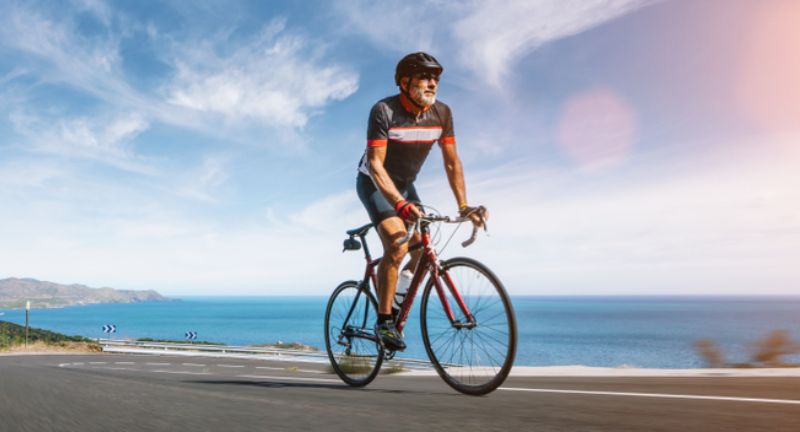
Shutterstock
Cycling is a fantastic way to improve leg strength and cardiovascular fitness while enjoying the outdoors. A 5-mile ride is an achievable goal that provides a sense of accomplishment and encourages exploration. Whether on a stationary or outdoor bike, regular cycling keeps you active and energized. It’s also a great way to socialize with fellow cyclists.
Take a Weekly Hike

Shutterstock
Hiking combines physical activity with the benefits of spending time in nature. Setting a goal to hike weekly keeps you fit while reducing stress and boosting mental clarity. Choose trails that match your fitness level and gradually challenge yourself with more difficult terrain. Hiking is a rewarding way to stay connected to the great outdoors.
Master Proper Posture
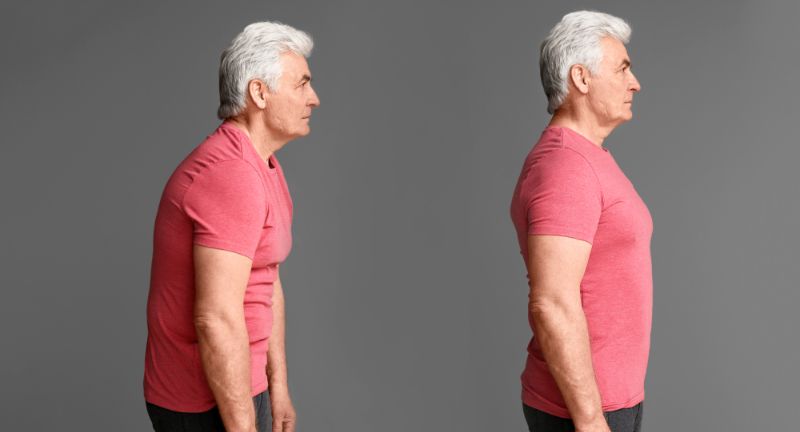
Shutterstock
Maintaining proper posture helps alleviate back pain and improve balance as you age. Practice exercises that strengthen your core and back muscles to support good alignment. Regular reminders to sit and stand tall can significantly impact your overall health. Achieving this goal enhances confidence and physical comfort in daily life.
Perform Push-Ups or Modified Push-Ups
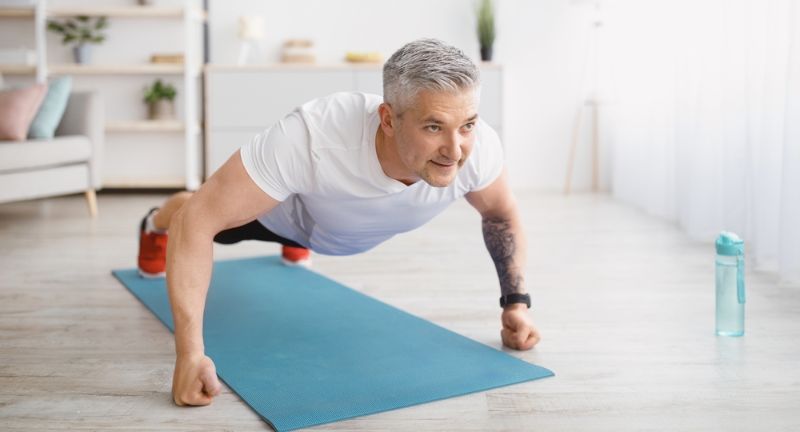
Shutterstock
Push-ups are a great measure of upper body strength and endurance. Whether traditional or modified (on your knees or against a wall), practicing push-ups improves arm, chest, and core muscles. Aim to complete at least 10 push-ups in a row. This goal supports functional strength for everyday tasks like lifting and carrying.
Take Part in a Charity Walk
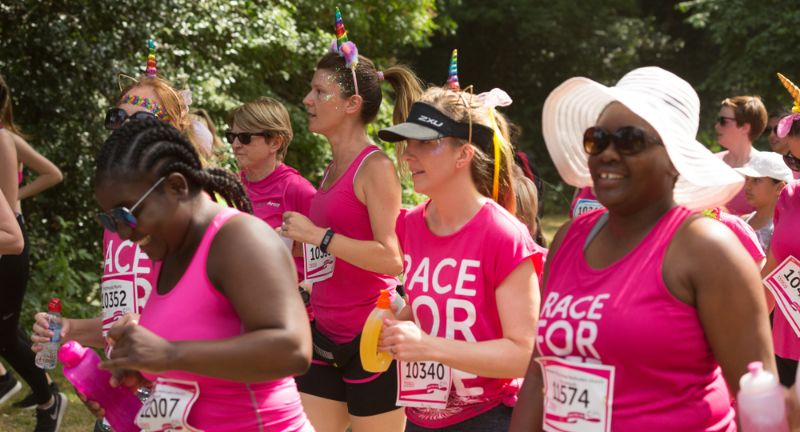
Shutterstock
Participating in a charity walk combines fitness with giving back to your community. These events offer a sense of purpose and camaraderie while encouraging regular physical activity. Choose a cause you’re passionate about to make the experience even more meaningful. Walking for a cause keeps you motivated and engaged in retirement.
Stand Up from a Chair Without Assistance
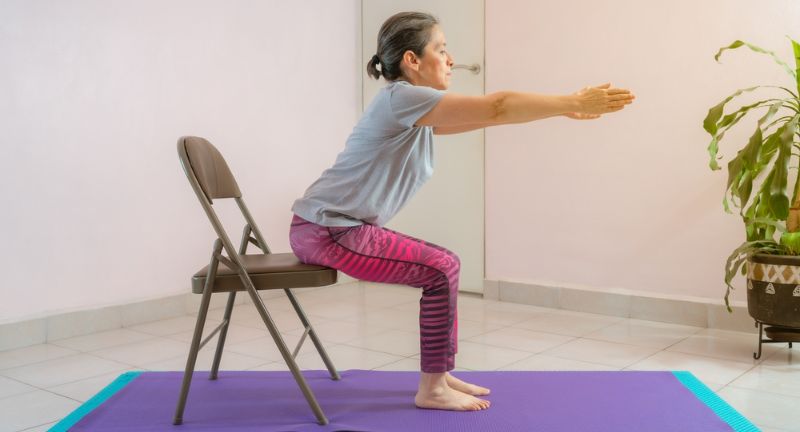
Shutterstock
Being able to rise from a seated position without using your hands is a sign of strong leg and core muscles. This practical goal enhances mobility and independence in daily life. Practice this movement regularly to maintain strength and balance. It’s a simple yet effective way to stay active and capable.
Improve Mental Fitness Through Physical Activity
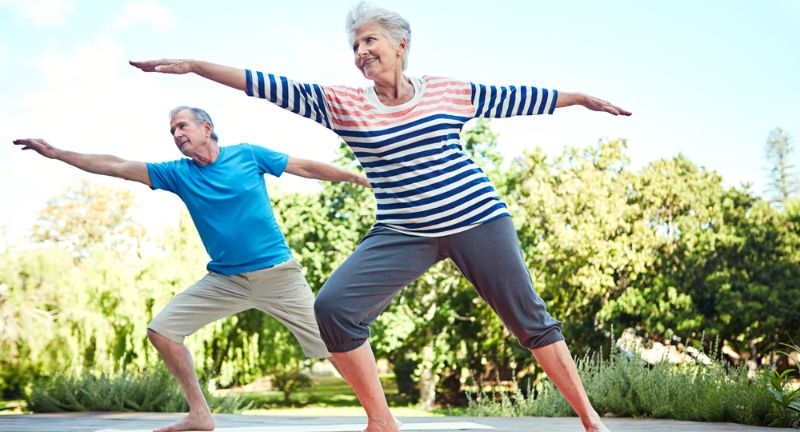
Shutterstock
Physical fitness contributes to mental health by reducing stress, improving mood, and enhancing cognitive function. Activities like yoga, tai chi, or even brisk walking stimulate both body and mind. Set a goal to include exercises that promote relaxation and mindfulness. Prioritizing mental fitness ensures a balanced and fulfilling retirement.
Conclusion
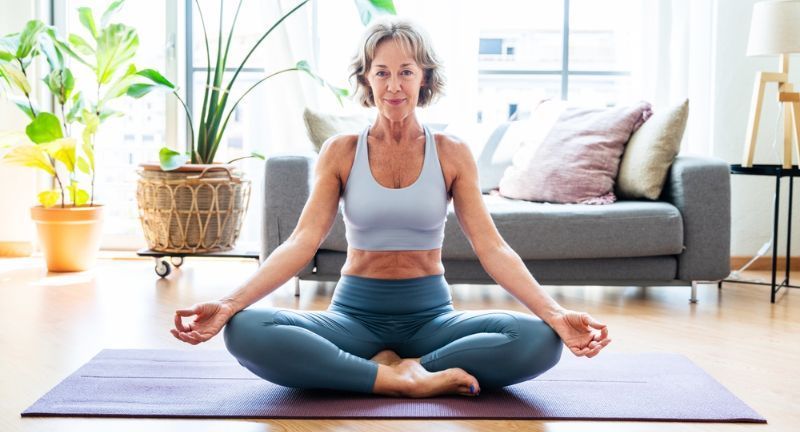
Shutterstock
Achieving these fitness goals can help you live a healthier, happier, and more active life in retirement. From improving balance to maintaining strength and flexibility, each goal supports independence and overall well-being. Setting realistic, enjoyable targets ensures you stay motivated and committed. Embrace these challenges to make the most of this exciting new chapter in life.
More From Local News X
-


23 Things Left Behind In The 1900s That We Should…
-


Large Boats Catches on Fire in English Harbor
-


Escaped Killer Slips Search Perimeter in Pennsylvania, Manhunt Expands South
-


Traffic in New Orleans, LA Has Left Local In Dissaray
-


24 Social Skills That Can Boost Your Likeability
-


20 Careers That Are Likeliest To Lead To Divorce
-


22 Strategies for Keeping Your New Year’s Promises
-


20 Signs Someone Is Likely To Betray You
-


Hi one of four black men in Santa Barbara, Says…
-


20 Disrespectful Behaviors That Are Common Now, But Need To…
-


Large Building Fire in Orange, Massachusetts
-


27 Foods Most People Don’t Know Are Banned In America
